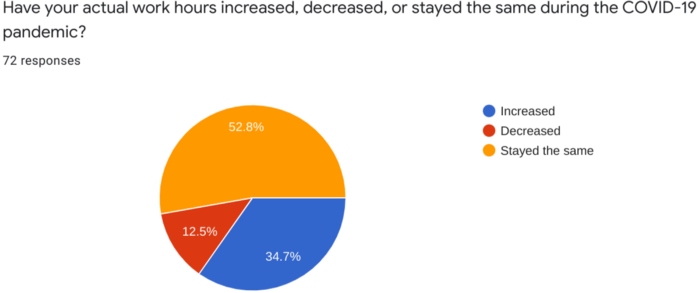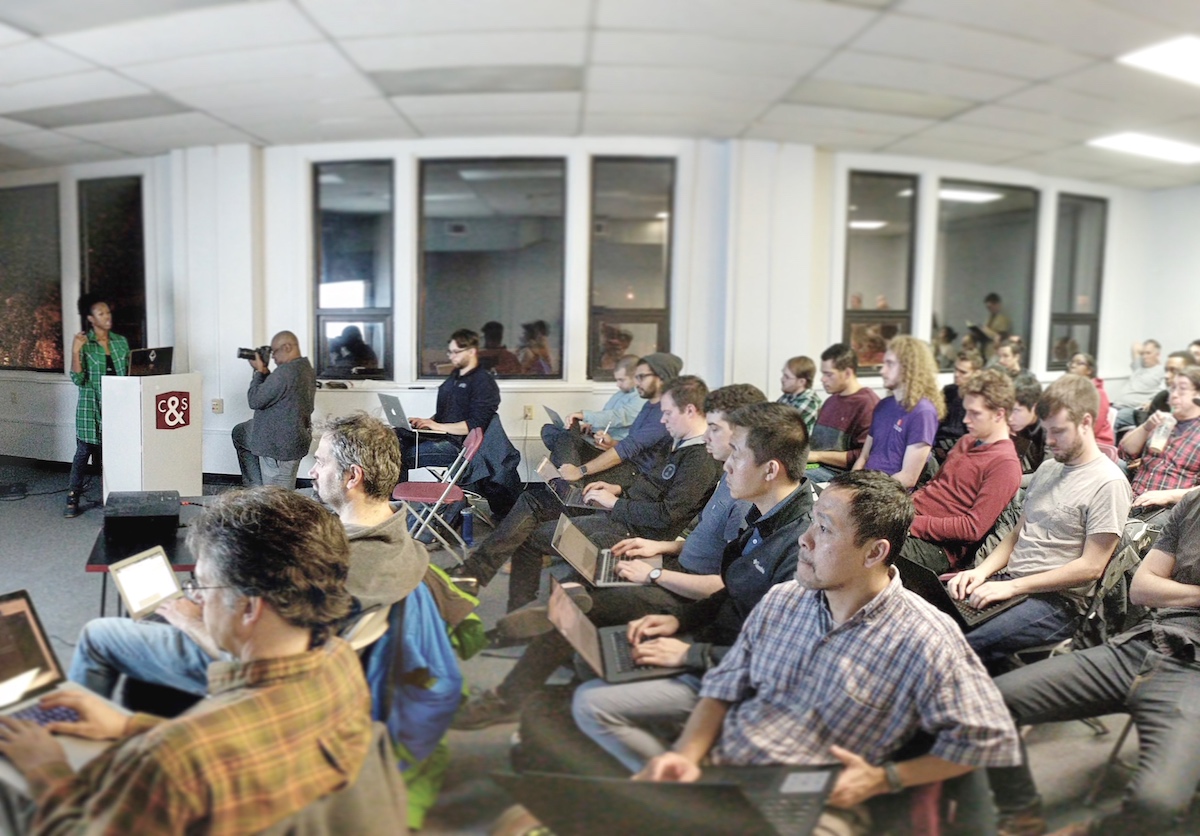From May into July, we surveyed members of the Code & Supply community about their work-life during the COVID-19 pandemic. We received 71 anonymous responses. The survey was twofold, focusing on personal and familial questions before inquiring about work-life.
More than half of respondents said their mental health was worse than usual, while only about 15% said it improved.
Only a few respondents (7) said that someone in their household or they cared for was diagnosed with COVID-19. 57% of respondents knew someone who was hospitalized or died because of the COVID-19 pandemic.

55.6% said their mental health was worsened by the pandemic, while 15.3% said their mental health improved. 29.2% reported no change. (Graph by Code & Supply)
Working arrangements
Our respondents’ responses about working arrangements prior to and during the pandemic and preferred arrangement going forward reflect the industry-wide shift in preference toward remote work.

Nearly all respondents worked remotely during the pandemic. Notice the shift toward remote work preference. (Graph by Code & Supply)
When are respondents planning to return to the office? Responses reflect a similar level of uncertainty. 79% of respondents have an idea of what their working arrangement will be now or in the coming months.

While about 30% can head back to the office now, only about 15% will head back in the remainder of 2021 and into early 2022. (Graph by Code & Supply)
That approximately 21% of respondents don’t know when they will return to the office is interesting. That group could end up in the “never or almost never” group just as easily as the scheduled return groups.
Delving into the workplace questions, we found that most respondents’ work hours stayed the same or decreased during COVID.

(Graph by Code & Supply)
This change in work hours is of interest to our survey team as we wanted to understand if working from home increased the amount of time respondents spent working. There’s some correlation, but not a strong one.
Pandemic policies and job security
Employers did make some changes. The top ones reported were stipends given for home offices, more flex time, and employer-mandated PTO days. Thirty-three percent of respondents — 22 people — said their employer had no new policies. Seventeen respondents were required to be in the office with masks at the time of the survey. Notably, 29% of respondents’ companies provided a stipend for home office equipment.
Tech workers surveyed felt fairly stable. Twenty-eight percent of respondents reported that their employer withheld raises or bonuses due to the COVID-19 pandemic. We also asked if respondents were concerned about finding a new job in the industry during the pandemic; 85% were somewhat or very confident they would be able to find a new job, while 20% felt there was too much economic uncertainty to confidently leave an undesirable working environment, even if it was remote.
This uncertainty is alarming but unsurprising given respondents’ general worsened mental health and the general state of the economy in 2020.
Future work
It’s clear that follow-up work would help us understand how much C&S members and friends are participating in the so-called Great Resignation. We’ll also want to poll on outcomes versus preferred working arrangements: Did folks shift to remote work in their current role or did they get a new job in order to shift?
We are also interested in how the impact of additional variants such as the Delta variant change return-to-office initiatives.
###
Thanks to C&S’ Colin Dean for editing this post. If you’d like to participate in our future surveys or our survey working group, join us in #team-survey on C&S Slack or sign up for the C&S mailing list.
We periodically conduct a compensation survey for tech workers with an emphasis on software professionals. The last one was for 2020 and was released in early 2021. You can read more about it on the Code & Supply Compensation Survey site.

This guest post is a part of How We Work Now Month of Technical.ly's 2021 editorial calendar.
Before you go...
Please consider supporting Technical.ly to keep our independent journalism strong. Unlike most business-focused media outlets, we don’t have a paywall. Instead, we count on your personal and organizational support.
3 ways to support our work:- Contribute to the Journalism Fund. Charitable giving ensures our information remains free and accessible for residents to discover workforce programs and entrepreneurship pathways. This includes philanthropic grants and individual tax-deductible donations from readers like you.
- Use our Preferred Partners. Our directory of vetted providers offers high-quality recommendations for services our readers need, and each referral supports our journalism.
- Use our services. If you need entrepreneurs and tech leaders to buy your services, are seeking technologists to hire or want more professionals to know about your ecosystem, Technical.ly has the biggest and most engaged audience in the mid-Atlantic. We help companies tell their stories and answer big questions to meet and serve our community.
Join our growing Slack community
Join 5,000 tech professionals and entrepreneurs in our community Slack today!

The man charged in the UnitedHealthcare CEO shooting had a ton of tech connections

The billion-dollar creator industry hits Pittsburgh — and disrupts the innovation economy

From rejection to innovation: How I built a tool to beat AI hiring algorithms at their own game



